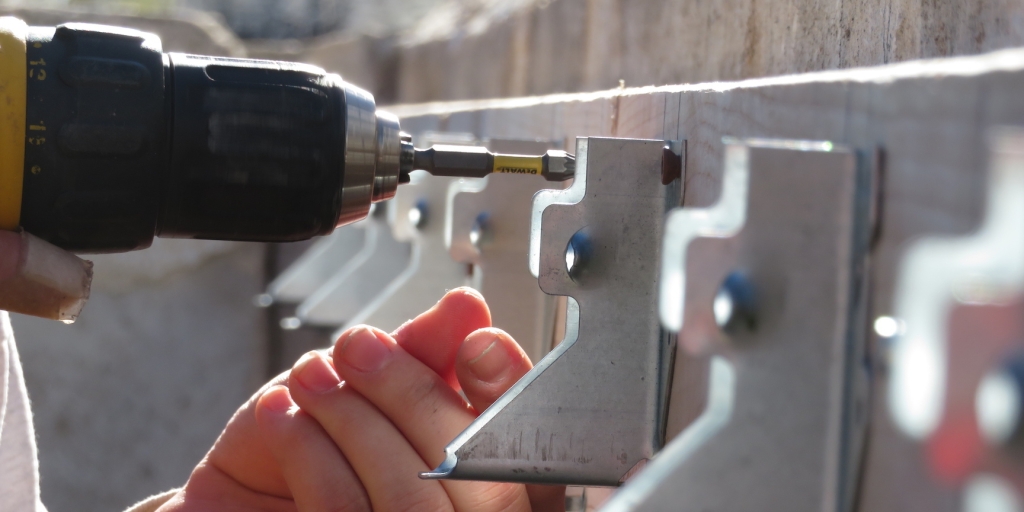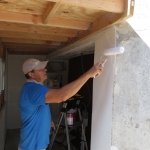
With the original use of the Test Module (1987-1990) the heat exchanger suspended from the space frame was fed temperature controlled water from an adjacent building via underground copper tubes. The air brought into the lung by means of the blower was also, originally introduced in the same adjacent facility.
Over the course of thirty years of disuse the desert took over, rendering that building as unfit for air intake (to be kind). As such, in June of 2021 Trent and Kai removed the blower, cleaned it thoroughly, and remounted it on an exterior, concrete wall of the lung structure. And after thirty years it still worked flawlessly!
The concrete structure supporting the south, steel wall of the lung appears to have had a design intent greater than what was completed, for several pieces of half inch rebar remained exposed, and a hip-high concrete block wall remained unfinished. It also appears a door was intended, but never installed.
As it is very important to the health of the crew and science conducted that the quality of air be maintained to the highest standards. As such, the SAM team set out to build the SAM Air Intake Room (with the very clever acronym “AIR”). For any of you who have built a wood frame to fit an existing, not-a-single-corner-is-square construction, the effort is as much creativity as it is proper framing.
 What we had hoped to be a solid week and a day or so became two full weeks with the steel door yet to be hung. But in the end, John Z., Luna, Elie, Colleen and Kai have transformed what was an unpleasant space into something quite professional. Once complete, the air entering the SAM lung will pass through a HEPA particle filter and then one or two activated carbon filters before entering the blower and lung. The flow rate and quality of air will be monitored and recorded using a sensor array tied to SIMOC, now in its final development by an Arizona State University Computer Science Capstone team.
What we had hoped to be a solid week and a day or so became two full weeks with the steel door yet to be hung. But in the end, John Z., Luna, Elie, Colleen and Kai have transformed what was an unpleasant space into something quite professional. Once complete, the air entering the SAM lung will pass through a HEPA particle filter and then one or two activated carbon filters before entering the blower and lung. The flow rate and quality of air will be monitored and recorded using a sensor array tied to SIMOC, now in its final development by an Arizona State University Computer Science Capstone team.

